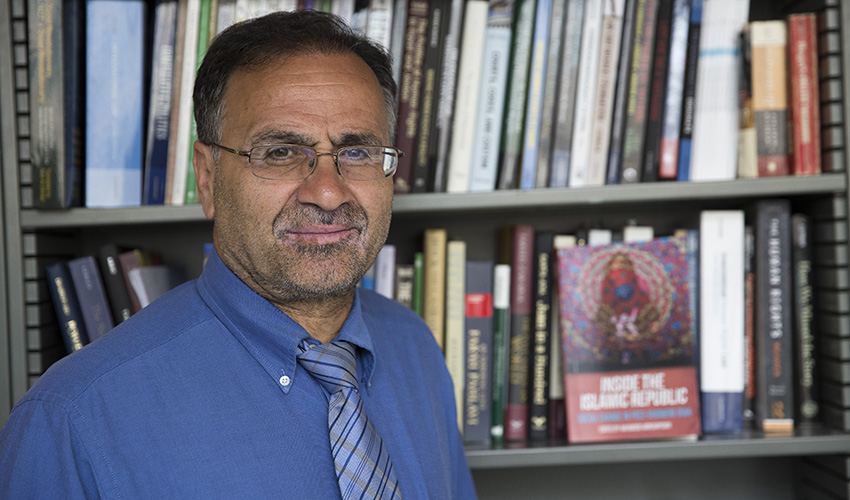Professor’s book offers window into Post-Khomeini Iran

SF State Professor of International Relations Mahmood Monshipouri edited a 2016 essay collection on life inside post-Khomeini Iran.
Highly regarded essay collection, “Inside the Islamic Republic: Social Change in Post-Khomeini Iran,” gives critical look at contemporary Iran
There are three things San Francisco State University Professor of International Relations Mahmood Monshipouri wants people to know about modern Iran: The culture is dynamic and changing, Iranians are politically savvy and, as a nation, Iranians feel isolated and long to be open to the rest of the world.
This reality is explored in depth in the 2016 essay collection “Inside the Islamic Republic: Social Change in Post-Khomeini Iran,” edited by Monshipouri. The Times Literary Supplement, the world’s leading literary journal, called it one of the top books on Iran in 2016. The purpose of the book is to dispel the idea that Iranian culture has been frozen in time since the 1979 Iranian Revolution, Monshipouri said.
“Our intention was to introduce Iran to the world by giving people a lens into the socio-economic transformations underway. We wanted to look at pop music, cinema, human rights, changing patterns within the family, the experiences of women, criminal justice,” he said. For example, 64 percent of graduates from Iranian universities are women, and that’s really changing the dynamics of marriage. Monshipouri said he uses the book in classes he teaches at SF State and the University of California, Berkeley.
Growing up in Iran, Monshipouri saw firsthand how life changed after the 1979 Iranian Revolution, which ousted Iran’s monarch, Shah Mohammad Reza Pahlavi, and installed Shi’a cleric Ayatollah Ruhollah Khomeini. Khomeini denounced the United States and Western values and culture and was appointed lifetime religious and political leader of the world’s first Islamic republic. Since Khomeini’s death in 1989, there’s been a growing gulf between what the conservative, Islamist government decrees and the way many modern Iranians want to live, Monshipouri said. “Society is like three decades ahead of the government,” he said.
That growing divide is expressed in elections. In May 2017, President Hassan Rouhani was reelected and won by more than 60 percent of the vote, Monshipouri said. “Time and again Iranians have expressed their social power through voting and they have shown they are in favor of reform, opening up society and integration with the rest of the world. They are far removed from the hardcore principles of the Iranian Revolution of 1979,” he added.
According to Monshipouri, there are three facets that really define the Iranian identity. “They’re Persian, so they have that nationalistic identity. They’re Muslim. And, because of their historical contact with Europe, they have a European identity. That is to say they follow the culture, music, movies and sports of Europe, and that’s also why they are always open to change,” he said.
And more than half of the Iranian population is under 30, so they were born after the revolution transpired. Young Iranians want social freedoms and an improved economy, demands that are not ideological, but practical, he said. “The vast majority of Iranians think positively about the United States,” he said, “and they’d like Iran to normalize its relationship with the West.”
In related news, SF State has recently named Persis Karim the inaugural Neda Nobari Distinguished Chair and director of the Center for Iranian Diaspora Studies, a first-of-its-kind endeavor in academia. Karim is a professor of English and comparative literature and the founding director of the Persian Studies Program at San Jose State University.
